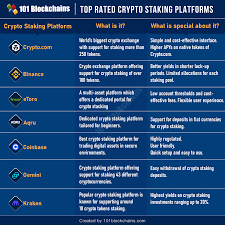Learn how crypto staking works and how to earn passive income. Discover the best staking coins, platforms, risks, and strategies for beginners.
- Investors are increasingly looking for ways to earn passive income in crypto.
- Staking allows holders of certain cryptocurrencies to lock their coins and earn rewards.
- In this guide, we’ll explain how crypto staking works, the best platforms, and the risks to consider.
1. What is Crypto Staking?
- Definition: Staking is the process of locking your crypto in a blockchain network that uses Proof-of-Stake (PoS) to validate transactions.
- In return, you earn staking rewards (like interest).
How it works:
- Buy a PoS coin (e.g., Ethereum, Cardano).
- Lock it in a wallet or staking platform.
- Earn regular rewards based on the amount staked.

2. Benefits of Staking for Passive Income
- Earn Rewards: Generate income by simply holding crypto.
- Support the Network: Stakers help secure the blockchain.
- Low Effort: Unlike trading, staking doesn’t require constant monitoring.
- Compounding: Rewards can be reinvested for greater returns.
3. Best Cryptocurrencies for Staking (2025)
Ethereum (ETH)
- The largest PoS crypto after Ethereum 2.0 upgrade.
- Annual returns: ~4–6%.
Cardano (ADA)
- Popular for energy-efficient staking.
- Annual returns: ~3–5%.
Polkadot (DOT)
- Flexible staking and parachain ecosystem.
- Annual returns: ~10–12%.
Solana (SOL)
- Fast-growing ecosystem.
- Annual returns: ~6–8%.
Tezos (XTZ)
- One of the earliest staking coins.
- Annual returns: ~5–7%.
4. Best Staking Platforms for Beginners
Centralized Exchanges (Easy to Use)
- Binance – Wide range of staking coins, flexible terms.
- Coinbase – Beginner-friendly but lower rewards.
- Kraken – Secure and transparent fees.
DeFi Platforms (Higher Rewards, Higher Risk)
- Lido Finance – Liquid ETH staking.
- Rocket Pool – Decentralized Ethereum staking.

5. Risks of Crypto Staking
- Price Volatility: Rewards may not offset losses if the coin drops in value.
- Lock-Up Periods: Some staking requires funds to be locked (can’t sell).
- Slashing Risk: Validators may be penalized for misbehavior.
- Platform Risk: Using centralized exchanges means trusting a third party.
6. How to Start Staking Crypto Safely
- Choose a Staking Coin – Pick ETH, ADA, or another PoS crypto.
- Select a Platform – Decide between centralized exchanges or DeFi protocols.
- Transfer Funds to Wallet/Exchange – Keep funds safe before staking.
- Start Staking – Lock coins and begin earning rewards.
- Monitor Performance – Reinvest rewards or withdraw as needed.
7. Is Staking Better Than Mining?
- Mining: Requires expensive hardware and electricity.
- Staking: Simple, eco-friendly, and accessible to beginners.
- Conclusion: For passive income, staking is usually more practical.
8. Tax Implications of Staking
- In many countries, staking rewards are considered taxable income.
- Later, when selling, capital gains tax may also apply.
🔗 External Resource: IRS Cryptocurrency Guidelines
Conclusion
- Crypto staking is one of the best ways to earn passive income in 2025.
- Safe, eco-friendly, and beginner-friendly compared to mining.
- Best Approach: Start small, choose trusted platforms, and diversify staking coins.
Key Takeaways:
- Staking rewards typically range from 3%–12% annually.
- Best coins: ETH, ADA, DOT, SOL, XTZ.
- Always weigh risk vs reward before locking funds.
- If you’re new to staking, start with a small amount on a trusted exchange like Coinbase or Kraken, then explore DeFi platforms as you gain experience.

